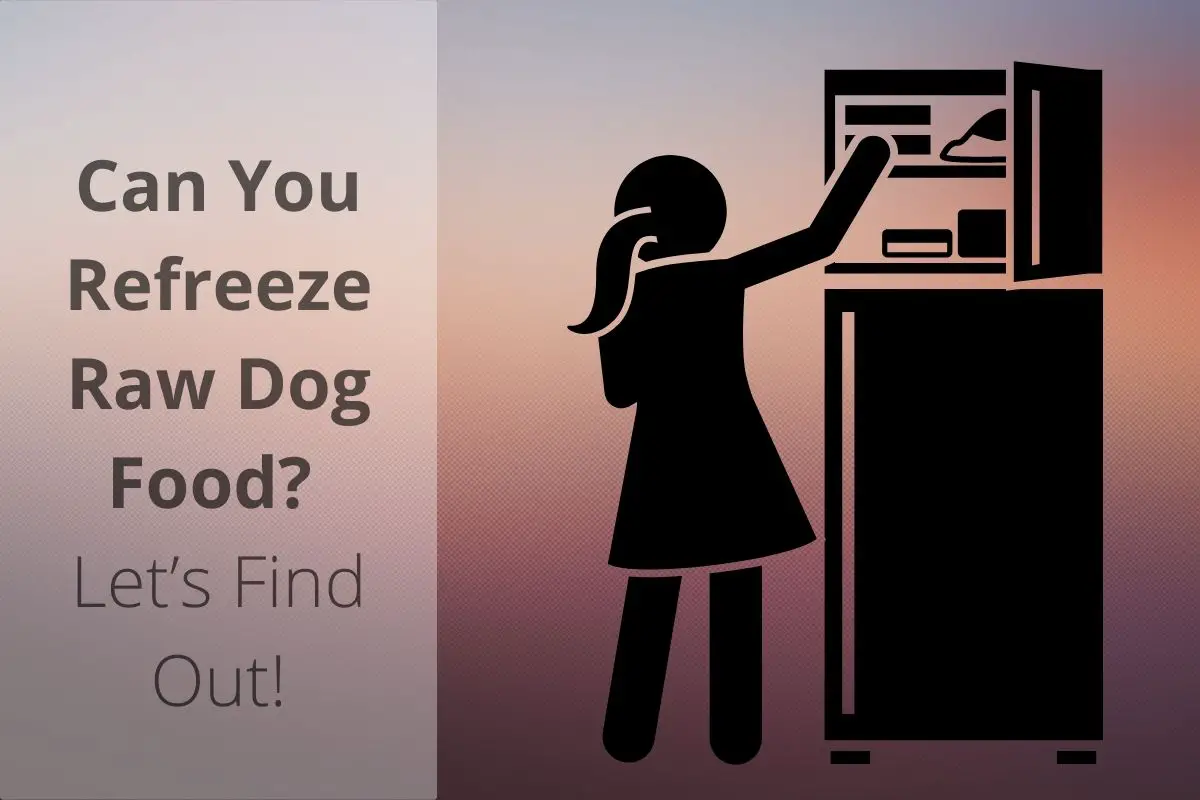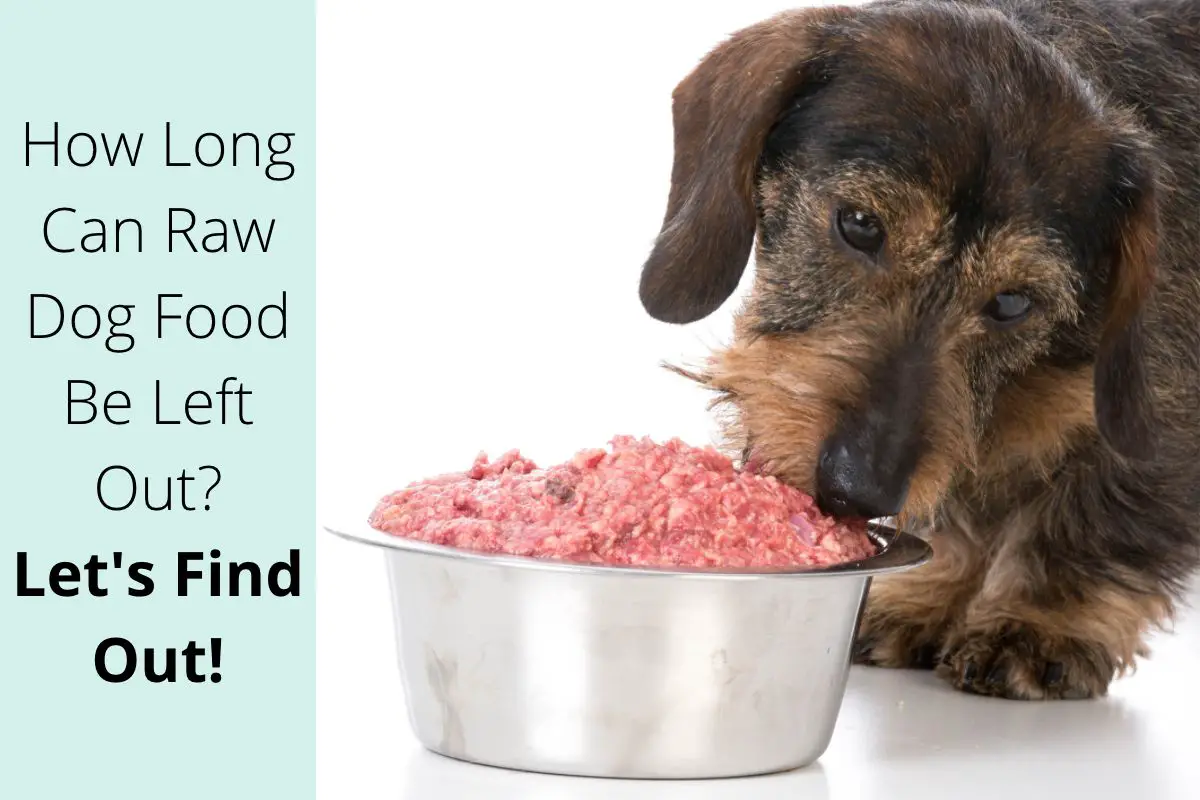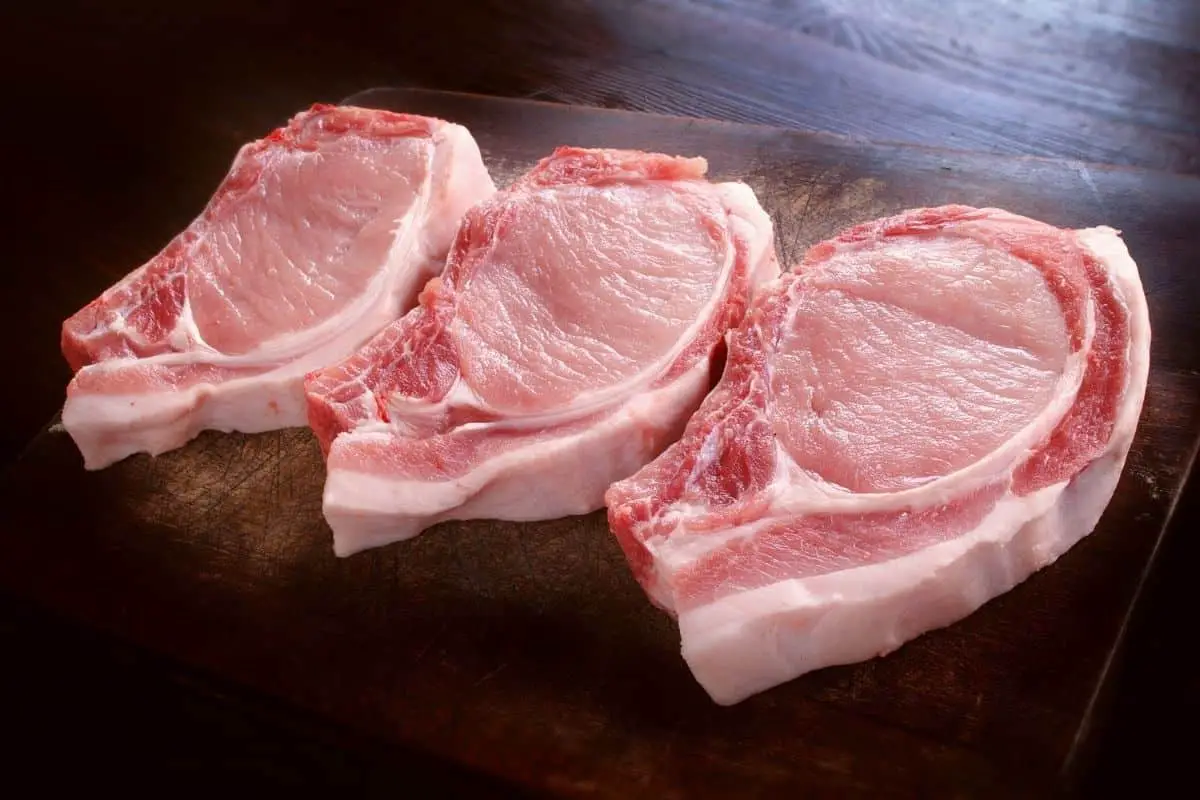This post contains affiliate links.
A dog’s farts can be noxious and unpleasant, and the dog food you give your pup might be the culprit. With the variety of diets available, you may struggle to decide which is best to prevent your dog from passing gas excessively.
Raw dog food does not usually cause gas because it is made with fresh, unprocessed ingredients that are generally easy for a dog to digest. Raw dog food also requires a dog to chew food longer and eat more slowly, reducing the incidence of flatulence.
Let’s find out how raw dog food affects your dog’s health, which dog foods are likely to cause gas, and how to ensure your pup has a balanced, nutritious diet and a safe, comfortable environment where they can enjoy their meals.
Table of Contents
Does Raw Dog Food Reduce Gas?
Raw dog food reduces gas in dogs by encouraging them to eat slowly and chew their food longer, making it easier to digest. Dogs that produce excessive gas or flatulence tend to swallow a lot of air with their dry food or kibble.
Raw dog food is made with whole, unprocessed fresh ingredients that are easier to digest. Easier digestion means that your dog will be able to extract more nutrients from the food, improving your dog’s overall health and well-being.
Better nutrient extraction also improves your dog’s energy level and mobility. When your dog is active, their overall musculature improves. That is true of every system in your pup’s body, including the digestive system. A well-functioning digestive system reduces excessive gas in your dog.
What Ingredients Does Raw Dog Food Contain?
Raw dog food contains animal protein in the form of muscle and organ meat, whole or ground bones, poultry eggs, fruits and vegetables that are safe for your dog, and some dairy products.
You can make fresh raw dog food at home or buy it ready-made. Store-bought commercial raw dog food is available freeze-dried or dehydrated.
No matter your choice, it is essential that you consult with a specialist canine nutritionist and your trusted vet before placing your pup on a raw dog food diet.
This Paws of Prey video gives you an idea of what you could include in a homemade raw food meal:
If your budget is limited, Paws of Prey explains how to modify this meal composition with cheaper, more accessible animal proteins in this video:
How To Transition to a Balanced Raw Dog Food Diet
You can transition to a balanced raw dog food diet by evaluating the following factors in consultation with a vet and canine nutritionist:
- Your lifestyle, time, and budget.
- Potential health and safety issues.
- Your dog’s breed, age, and size.
- Your dog’s nutritional requirements
- Your dog’s allergies and sensitivities.
- Your dog’s preferences.
So, let’s look at these considerations and talk about why they are so critical when you choose your dog’s food.
Your Lifestyle, Time, and Budget
Your lifestyle may not fit a balanced raw dog food diet because you don’t have the time to source the fresh ingredients and prepare them daily or weekly.
It’s good to scout your neighborhood for farmer’s markets, Asian food markets, and your local supermarket butchery. You’ll find a variety of animal proteins, meat cuts, and whole prey other than the usual beef and chicken.
Check out this video for a glimpse into the life of a dog, cat, and ferret on raw food diets:
As you transition your dog to a raw food diet, you’ll need to carefully monitor your dog’s stools for changes that indicate health issues or imbalances that you may need to address.
Look out for loose stool and diarrhea or firm and crumbly stools. They may indicate that you have too much organ meat or too little bone, and you will need to make some adjustments.
Potential Health and Safety Issues
There are health issues associated with the incorrect handling of raw animal products, and these risks apply to you, your dog, and your family members, who may be immunocompromised.
You can mitigate these risks by following the USDA’s safe food handling and preparation rules when preparing meals for you and your dog.
You can also set up a preparation area dedicated to your dog’s raw food diet. Set aside hypoallergenic utensils made of stainless steel and other materials that are easy to clean and sanitize.
Your Dog’s Breed, Age, and Size
Your dog has different nutritional needs at various stages of growth, and the raw dog food diet you provide should adapt as necessary.
A raw dog food diet is appropriate for most puppies, adults, and senior dog breeds. However, it is easier to transition your puppy to raw food because they are curious and not yet set in their ways.
Your Dog’s Nutritional Requirements
Your dog’s nutritional requirements are one of the bones of contention in any raw dog food controversy. Some raw diets lack the necessary nutrients and can lead to dietary deficiencies in your pup.
If a raw dog diet is not based on whole prey, it will often lack these vitamins and minerals:
- Vitamin D
- Vitamin E
- Zinc
- Manganese
- Iodine
- DHA
By working with a canine nutritionist and your vet, you can plug these nutritional gaps and put together a raw food diet that includes all of the essential nutrients your dog needs at every stage of their life.
Your Dog’s Allergies and Sensitivities
You should also consider the breed-specific dietary needs of your furry friend and any allergies or food sensitivities they may have.
Consult with your vet as your dog may have a sensitive digestive system that will not process raw food efficiently. Even if you cannot feed your dog raw food, you can cook their food to make it more easily digestible and increase the nutrients’ bioavailability.
Slow and steady is the name of the game, and you should try introducing raw food little by little, especially if you care for an adult or senior dog. You’ll be able to spot allergies quickly and make the necessary changes to your dog’s diet.
Variety is essential since food allergies and intolerance can develop from consuming one kind of food over a long time. That is why it’s also a good idea to rotate between a few of your dog’s favorite kibbles should you decide not to transition to a raw dog food diet.
Your Dog’s Preferences
Dogs are creatures of habits and find change difficult to process. You must go slowly and give your dog time to adjust to the new diet.
When introducing new meats, try steaming them to release the aromas, then feed small quantities along with your dog’s usual food. Do this over a few days, providing your dog with increasingly raw pieces of meat.
Remember that your dog is an individual and has particular preferences for flavors and textures. They will tell you if they like the smell of the raw dog food you provide and, ultimately, how it tastes.
How Does Raw Dog Food Affect Gas?
Raw dog food affects gas positively. Raw dog food should reduce excessive gas in your dog because it is easily digestible. Easily digestible food means your dog’s digestive system can easily extract nutrients from their food, reducing gas and other digestive issues.
A properly functioning digestive system, thanks to a raw food diet of fresh, unprocessed ingredients, has many benefits for your dog:
- Higher energy levels
- Smaller and firmer stools
- Improved dental health
- Shinier coat
When Gas Becomes a Health Risk for Your Dog
Some dog breeds are more prone to gas and may go on to develop abdominal distention or bloat. Bloating is often the result of gas, fluid, or undigested food accumulating in your dog’s digestive tract and blocking it.
This condition primarily affects large dogs like Basset Hounds, Doberman Pinschers, German Shepherds, Gordon Setters, Great Danes, Irish Setters, Saint Bernards, Standard Poodles, and Weimaraners.
As a dog gets older, the incidence of bloat increases and factors include:
- Stress
- A dry food diet.
- How fast your dog finishes a meal.
- Exercise and play immediately after a meal.
- How much water your dog drinks after strenuous activity.
Other breeds like the English bulldog are prone to gas because they are brachycephalic – their short snout and small nasal cavities make for labored breathing. They often gulp down a lot of air with their food, causing gas.
How Your Dog’s Food Can Cause Gas
A change in diet—from one brand of kibble to another, or from a dry food diet to raw dog food—is often the first culprit when trying to identify the cause of flatulence in your dog.
Dog food containing large amounts of legumes like beans, peas, and soybeans may cause excessive gas in your furry friend.
It’s not always necessary to avoid dog food that lists these ingredients, as most dogs are omnivores. However, you may limit how often you offer these foods to your dog.
Dog diets high in dairy products, fats, or spicy food may also cause gas and discomfort for your dog.
Dry dog food or kibble may also affect your dog’s digestive system and lead to dehydration and flatulence. Kibble contains about 5 % water compared to the 75 % in a balanced whole prey raw dog food diet.
After a kibble meal, your dog may drink too much water too quickly, which may cause gas or bloat.
Reduce Gas With Raw Dog Food
Raw dog food formulated for your dog’s specific needs will help reduce gas and prevent associated digestive disorders and allergies your dog may experience.
Raw dog food diets are as close as possible to your pup’s ancestral carnivorous diet while taking modern dogs’ omnivorous adaptations into account.
Let’s review your raw dog food options.
Homemade Raw Dog Food
If you choose the homemade raw meat-based diets (RMBDs) route, work with your vet or a canine nutritionist so that your dog’s new diet is balanced and complete.
You can feed your dog raw food whole or in manageable pieces, or you can grind and portion the food according to your dog’s feeding schedule.
Even if it contains bones, ground food will not have the same teeth-cleaning benefit as raw food your dog has to chew and tear.
Ground food also makes it more likely that your dog will inhale and gulp down air, causing gas.
One advantage of grinding your dog’s raw food is that you can transition your pup slowly by mixing some ground food with their kibble. Over time, switch the ratio of ground raw food and kibble until your dog eats only raw food.
You can then leave some of the organ meat pieces whole and grind the rest, switching this ratio of whole to ground over a few days until your furry friend adjusts to the change.
Store-Bought Raw Dog Food
Store-bought raw dog food comes frozen, freeze-dried, or dehydrated. These commercial dog food options may be complete or not.
Uncomplete raw dog food is an excellent way to begin transitioning your dog to a raw food diet since you can add a portion along with your pup’s favorite kibble brands.
Over time, you can replace the kibble with a mixture of fruit and vegetables, vitamins and minerals, and some bones to ensure your dog has balanced, nutritious meals.
Complete and balanced store-bought raw dog food often contains a single protein source and is frozen to kill some harmful microorganisms.
Freeze-dried raw dog food contains very little moisture and kills some of the bacteria that might be present in the ingredients used to make the food.
Dehydrated Raw Dog Food
Dehydrated raw dog food is heated slowly to remove its moisture content and reduce harmful microbes while maintaining a high nutritional content.
However, if the ingredients used in dehydrated raw dog food contain Salmonella or Escherichia coli (E. coli), these will not be eliminated in the dehydration process.
High-Pressure Pasteurized Raw Dog Food
The ingredients in high-pressure pasteurized raw dog food have been put under high pressure ranging from 43,500 to 87,000 psi.
Although this process does not involve any heat, Salmonella and Listeria are eliminated safely without affecting the food’s nutritional quality.
Reduce Gas With a Stress-Free Eating Environment
You can create a stress-free eating environment for your dog to reduce gas by paying attention to the food you provide, maintaining a consistent routine, and making mealtime as comfortable and safe as possible.
Your dog likes to feel secure, and you can achieve this by providing consistent and predictable mealtimes. Most adult dogs need two meals a day, no more than 12 hours apart.
Dedicate a quiet and safe spot in your home for your dog’s meals. You want to avoid stress which may upset your pup’s digestive system. You also want your dog to know that their food is not at risk.
If your dog is a large breed, you can raise their food bowls for comfort and ease. Use hypoallergenic food bowls made of stainless steel as they are light, easy to carry, and won’t break.
Your dog may tend to inhale their food and air, causing excessive gas. Try a slow-feed bowl like the DuraPet Slow Feeder Stainless Steel Dog Bowl from Amazon.com
to teach your furry friend to savor their delicious meal. It’s a fun, stimulating way to reduce stress and help avoid bloating.
The Nina Ottosson Dog Treat Puzzle from Amazon.com is ideal for dispensing your dog’s favorite treats in an engaging, mentally challenging way. The puzzle comes apart, so you can easily wash it with warm water and soap, and it is made of a durable composite plastic that should withstand some rough play.
Watch Nina Ottosson herself give you a few tips and tricks when using the Dog Brick:
Conclusion
A science-backed raw dog food diet formulated with the help of your vet and a canine nutritionist will improve your dog’s overall health and reduce gas and other digestive issues.
Whatever your choice of raw dog food to prevent gas, take your time transitioning your dog to a new diet. It will also keep the food change from upsetting your dog’s stomach.
If you choose to feed high-quality kibble to your dog, try a diet rotation method to bring variety and stimulation into your dog’s mealtimes. After all, food can be fun, too:
Mrdogfood.com is a participant in the Amazon Services LLC Associates Program, an affiliate advertising program designed to provide a means for sites to earn advertising fees by advertising and linking to Amazon.com. We also participate in other affiliate programs which compensate us for referring traffic.




